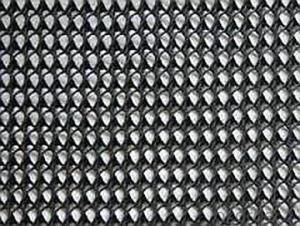When it comes to strengthening and steadying different building projects, geotextile fabrics are essential. Out of the many geotextile fabrics available, the ‘4 oz non woven geotextile fabric’ distinguishes itself due to its unique characteristics and applications. This article goes deeper into this fabric by examining its attributes, advantages, and how it contributes to successful construction projects.
The Essence of 4 oz Non Woven Geotextile Fabric
The ‘4 oz non woven geotextile fabric’ is a versatile material known for its lightweight yet firm nature. The synthetic fiber polypropylene from which it is made ensures that it is durable enough to withstand exposure to the environment and other forms of wear. It is a non-woven material which means instead of being woven traditionally, fibers are bound together leading to a strong but flexible fabric.
Applications in Construction
Soil stabilization and reinforcement during construction works provide some of the main areas where ‘4 oz non woven geotextile fabric’ can be used. It acts as a separator so that there won’t be any mixing between various soil types, filter allowing water through but retaining soil particles and drainage layer facilitating flow of water respectively. As well this type is applied for erosion control defending against washing away with the run off water soils.
Environmental Benefits
Using ‘4 oz non woven geotextile fabric’ has important environmental benefits associated with such choice. That’s why this is an eco-friendly option for use in architectural initiatives as it consists of recycled materials primarily. Moreover, project-wise application may result in less negative impact on nature including prevention of soil erosion and enhancement of water management systems.
Personal Touch: My Experience with the Fabric
I was lucky enough to engage on a project within my own town using ‘4 oz non woven geotextile.’ Given that this material was light weight; I could easily move or put into place at my level of experience. I was surprised by its durability, that it could withstand the weight of heavy machinery as well as the pressure caused by the soil.
Installation and Maintenance
The process of installing ‘4 oz non woven geotextile fabric’ is simple. This can be done with minimal tools and a team of workers can complete it within a short duration of time. Additionally, maintenance is relatively low given that UV rays cannot damage it, resistant to microbial degradation and chemical attacks. It means that once you have put in place this kind of fabric, there will not be any extra work expected from your side thus saving both money and time.
Challenges and Solutions
Despite these advantages, working with 4 oz non woven geotextile fabric has some limitations. For example, sharp objects and punctures may harm the material but with precautionary measures such as protective layer or careful handling during installation would minimize them.
The Future of Geotextile Fabrics
In the future, ‘4 oz non woven geotextile fabric’ is expected to assume an even greater role in construction as new techniques emerge and sustainable options are sought. With regards to environmental footprint reduction, versatility makes such projects more preferable due to their ecological aspect.
Conclusion
The 4 oz non-woven geotextile fabric can be seen as an extraordinary fabric with numerous construction advantages. It should be considered when soil stabilization and reinforcement are required, for its strength, flexibility, environmental advantages, and ease of installation. When I think about this textile product, it amazes me how much it can do in the course of a construction project.







